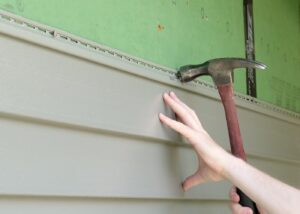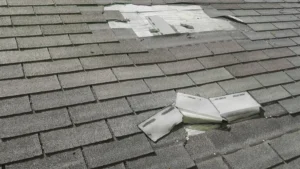Driveway Replacement Colorado Springs provides a smooth vehicle surface and is a significant part of your home’s curb appeal. It also serves as a barrier between your property and the elements.
While minor cracks can be patched, larger and deeper ones are a time for a new driveway. If water seeps in, it can freeze and expand when the temperature changes, causing additional damage.

Small cracks in the surface of a driveway are common, but they don’t necessarily indicate a major problem. In fact, they usually show up soon after the concrete is poured and are called shrinkage cracks. If they don’t get any bigger, you can simply seal them with a flexible concrete crack.
Wide fissures aren’t as easy to fix, but you can make a temporary repair by placing a concrete crack filler in the cracks. Before you can repair the cracks, though, it’s important to clean them thoroughly. Hose the area down and use a pressure washer with a low setting and wide nozzle to remove any dirt, debris or mold. You can also use a multipurpose pressure washer detergent to give the driveway a thorough cleaning without damaging the concrete. Once the cracks are cleaned, they need to be completely dry before you can fill them.
If the cracks are narrower than a quarter inch, you can use a liquid crack filler that is available at any home improvement store. It pores directly into the crack and self-levels. For wider cracks, you’ll need a bag of concrete crack repair mix or concrete resurfacer. For larger cracks, a roll of backer rod can help to prevent them from widening further. Backer rod is made from foam similar to a pool noodle and is available at most home improvement stores.
Once the cracks have been filled, you’ll need to sand any rough edges. You can use a hand sander or an orbital sander with coarse-grit sandpaper to smooth the repaired areas. It’s a good idea to follow the instructions on the specific product you’ve used so you can understand how long you should wait before driving over the newly-repaired cracks.
If the cracks are too severe, you may need to hire a professional. A qualified concrete contractor will be able to assess the damage and recommend the best method of repair. In some cases, you might need to remove and repourn the entire driveway. However, the cost of repairing a 10-foot section of the driveway is typically less than $50.
Potholes are one of the most common signs that a driveway is in need of repairs. They are a nuisance and can damage cars and cause tyre problems. They also pose a safety risk for pedestrians and drivers. Whether your driveway is asphalt or gravel, it’s important to address them as soon as you spot them.
Pothole repairs are not always easy, but they’re necessary. They are caused by water that seeps beneath the surface of your driveway, freezes and thaws, which causes the paving to rise upwards and create a hole. The problem becomes worse when traffic drives over the pothole, which further erodes the asphalt and creates a bigger hole.
A well-maintained driveway is less likely to have potholes, but it’s still possible to develop them over time. You can prevent them by making sure your driveway is free from debris and that water drains away easily. You should also avoid putting down oil-based products in your driveway, as these can lead to a chemical reaction with the asphalt and cause further damage.
The best way to prevent potholes is to invest in regular maintenance. This includes slurry sealing and regular chipping of your driveway. This will help to protect it from damage and keep it looking great for longer.
If you do have a pothole, the first step is to clean it out thoroughly. This can be done by using a scraper, chisel or strong screwdriver to remove all the deteriorated asphalt. Then you should fill the hole with coarse gravel up to about three inches below the asphalt level and then tamp down the surface. This can be done with a commercial tamper or by using a homemade substitute such as a piece of plywood nailed to the bottom of a four-foot long 2×4.
If you are repairing small potholes, look for a product that is HAPAS approved (Highways Authority Product Approval Scheme). These products will have been tested to ensure that they have a good bond with existing asphalt and will last for years. If you have a larger sinkhole, it might be necessary to dig it out and then add a fresh layer of asphalt to repair it properly.
Rainfall is beautiful, soothing, and cleansing—but it can also be a headache for homeowners with driveways that don’t drain well. Water with nowhere to go wears down driveway materials like tarmac and concrete, creates unsightly water stains, and can even damage your foundation. Thankfully, there are several effective solutions for drainage problems in your driveway.
The first step in solving your drainage issues is to examine the draining channels around your driveway. Make sure they are clear of debris and that they have proper slope. It’s also a good idea to check the gutters on your roof, as these will help direct runoff away from your driveway.
If you see that your driveway has low spots, this indicates a problem with the soil underneath. A more long-term solution would be to regrade your yard and driveway so that the area surrounding them is higher than the concrete.
Installing a driveway drain is another way to address drainage issues. These devices, which are also available in a variety of styles and designs, are designed to divert water away from your driveway and into the surrounding landscape. This not only helps reduce puddles and water stains, but it can help prevent erosion and other yard problems as well.
Another option for tackling a driveway with poor drainage is to add a layer of crushed rock or gravel. This will help increase the surface friction and absorb moisture, preventing it from pooling and damaging your driveway.
For a more permanent solution, you can install a trench drain. This is a long channel that runs across the length of your driveway. It’s covered with a grate, which keeps debris out of the drain while still allowing water to flow through it. These are a great option for any type of driveway, and they’re easy to install yourself or hire someone to do it for you.
A rough surface is a surface that has irregularities in shape and height. The unevenness can cause the friction between two surfaces to be much higher than normal. Rough surfaces also have a tendency to attract dust and dirt, which can cause the surfaces to become worn down and damaged over time. The good news is that most types of rough surfaces can be repaired with relatively inexpensive methods.
A smooth surface is a surface that has no irregularities or bumps on it. A smooth surface is very easy to clean and maintain, so it will look great for a long period of time. A smooth surface is often made of a material such as wood, tile, or concrete.
Rough surfaces are a common problem in driveways, and there are many ways that they can be repaired. Most of the time, it is a simple matter of filling in the cracks and holes with concrete or cold patch asphalt. In some cases, however, the entire driveway may need to be replaced. If the driveway is heaving or shifting significantly, it is usually best to replace it rather than trying to fix it.
The first step in repairing a rough surface is to hose it down and spray it with weed killer. Next, you will need to fill any cracks up to 1/4 inch wide with concrete or cold patch asphalt. It is best to do this in the fall or spring, so that the repair can cure before the temperature gets too hot.
Some of the most common signs that it is time to resurface your driveway include large potholes and alligator cracks (thin, alligator-like cracks that appear on the surface). In addition, you should check your asphalt or concrete driveway regularly for any sunken areas. These can be a sign that the ground underneath is eroding or settling.
Rough surfaces are a complex problem with many different causes. This book provides an overview of the theory, measurement and characterisation of rough surfaces. It covers topics from the fundamentals to advanced applications, and includes chapters on fractals, motif analysis and 3D modelling. It is an ideal reference for scientists and engineers involved in the characterization of surfaces, including manufacturing and production, optical and quality control engineers, and tribologists.







